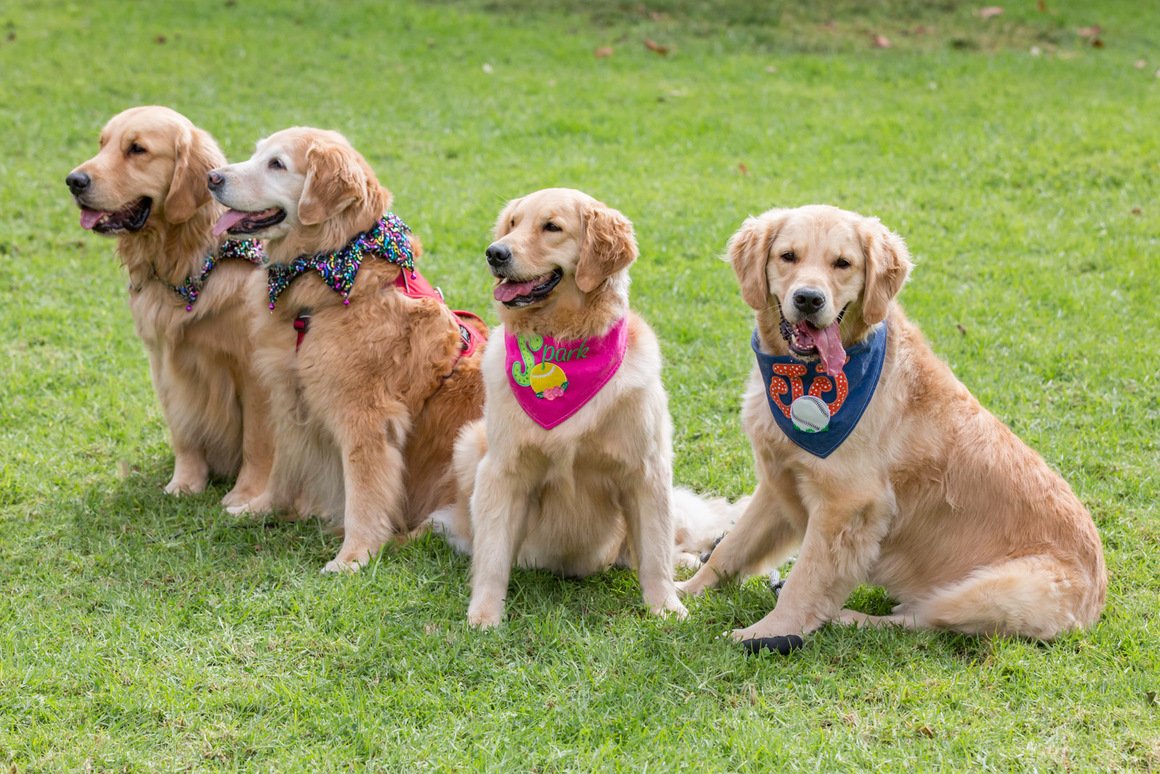Is Fido driving you up the wall with his relentless marking habits? Worried that your home is starting to resemble a canine art gallery? Fear not, for we’ve got you covered! Welcome to our enlightening FAQ guide on how to train a dog to stop marking. Whether it’s a newly adopted puppy or a seasoned veteran of the marking world, we’ve compiled a list of the most burning questions to help you navigate this rather pungent predicament. So grab your leash, put on your problem-solving cap, and let’s embark on this adventure together — one pee-free step at a time!
Table of Contents
- Understanding the Issue: What is Dog Marking and Why Do Dogs Do It?
- Identifying the Triggers: What Causes Dogs to Mark and How to Recognize the Behavior?
- Effective Strategies: Proven Methods to Train Your Dog to Stop Marking
- Creating a Positive Environment: Tips for Managing and Preventing Marking Behavior
- Addressing Persistent Marking: When to Seek Professional Help and Potential Solutions
- Q&A
- Future Outlook

Understanding the Issue: What is Dog Marking and Why Do Dogs Do It?
Dog marking is a common behavior among our furry friends, and it can sometimes leave pet owners puzzled and frustrated. So, what exactly is dog marking? Well, marking refers to the behavior of a dog urinating on various objects or surfaces as a means of communication. Unlike regular urination, where dogs empty their bladders, marking is a way for dogs to leave their scent and claim their territory.
There are several reasons why dogs engage in this behavior. Understanding these reasons can help us better manage and address the issue. One reason is to assert dominance. Marking allows dogs to establish their presence and communicate to other dogs that a particular area or object belongs to them. It acts as a symbolic message saying, “This is mine!”
Another reason dogs mark is to attract a mate. By leaving their scent, dogs indicate their reproductive availability to potential partners. It’s their way of saying, “I’m here and ready to mingle!” While this may not be a concern for pet owners who have spayed or neutered their dogs, it still remains an instinctual behavior deeply ingrained in their canine DNA.
It’s important to note that marking is a natural behavior for dogs, but excessive marking or marking indoors can become problematic. Addressing this issue may involve implementing consistent training techniques and creating a suitable environment that discourages excessive marking. With patience and understanding, we can navigate this behavior and promote a harmonious living space for both humans and their furry companions.

Identifying the Triggers: What Causes Dogs to Mark and How to Recognize the Behavior?
Understanding why dogs mark their territory is an essential part of being a responsible pet owner. Identifying the triggers that cause dogs to mark and recognizing the behavior can help you address this issue effectively. Here are some key factors that contribute to marking behavior in dogs:
- Hormonal cues: Unneutered male dogs are more prone to marking as they feel the need to advertise their presence to potential mates. However, female dogs can also mark, especially when in heat.
- Territorial instincts: Dogs have a natural instinct to mark their territory. This behavior can intensify when introducing a new pet, moving to a new home, or encountering unfamiliar scents and objects.
- Emotional triggers: Dogs may mark due to feelings of anxiety, stress, or insecurity. Changes in the household, such as the arrival of a new baby, can trigger this behavior.
- Species-specific communication: Dogs use marking as a form of communication with other dogs. It allows them to leave messages and establish social hierarchies within their pack.
Recognizing the behavior of marking is crucial in addressing the issue. Look out for the following signs:
- Lifting of leg: Male dogs often lift their leg to mark vertical surfaces, such as walls, furniture, or trees. Female dogs may also display this behavior, although less frequently.
- Frequent sniffing: Dogs sniffing the ground or objects incessantly can be an indication of marking behavior. It is their way of investigating and determining where to leave their mark.
- Recurring marking in specific areas: If your dog repeatedly marks the same spots, both inside and outside the house, it is a clear sign of territorial marking behavior.
- Visible signs of marking: Small amounts of urine left on vertical objects or sprayed in specific patterns can be visual evidence of marking behavior.
By understanding the triggers behind dogs marking and being able to recognize the behavior, you can take appropriate measures to manage or redirect their marking tendencies, creating a harmonious environment for both your furry friend and yourself.

Effective Strategies: Proven Methods to Train Your Dog to Stop Marking
Dog marking can be a frustrating behavior to deal with, but with the right strategies and methods, you can effectively train your furry friend to stop this habit. Here are some proven techniques that can help you in your journey to eliminate marking:
Consistency is Key:
Consistency is vital when it comes to training your dog to stop marking. Establish a clear routine and stick to it. Take your pup outside at regular intervals, reward them for eliminating in the appropriate spot, and discourage any marking behavior indoors. By providing a consistent environment, your dog will understand the boundaries and expectations.
Positive Reinforcement:
Using positive reinforcement is a powerful tool in getting your dog to stop marking. Reward them with praise, treats, or their favorite toy when they eliminate outside without marking. This positive association reinforces the desired behavior, making it more likely for them to repeat it. Avoid punishment or negative reinforcement, as it can be counterproductive and may create fear or anxiety in your pet.
Clean Up Accidents Properly:
If your dog has marked indoors, it’s crucial to clean up the area properly. Use an odor-neutralizing cleaner specifically designed for pet accidents. Standard household cleaners may not completely remove the scent, causing your dog to be drawn back to that spot. Eliminate the odor to prevent future marking incidents in the same area.
Schedule Regular Exercise:
Adequate exercise can play a significant role in reducing marking behavior. Ensure your dog receives enough physical and mental stimulation daily. A tired dog is less likely to engage in unwanted behaviors, including marking. Consider incorporating activities such as walks, playtime, and puzzle toys into their routine to keep them happily occupied.
Consider Spaying or Neutering:
If your dog’s marking behavior persists despite training efforts, you may want to consider spaying or neutering. This procedure can help reduce hormone-driven marking tendencies in both male and female dogs. Consult with your veterinarian to determine if this option is suitable for your pet.
By implementing these effective strategies, you can train your dog to stop marking and create a clean and harmonious environment for both you and your furry companion.

Creating a Positive Environment: Tips for Managing and Preventing Marking Behavior
Creating a harmonious and joyful environment for your furry friend goes beyond providing affection and attention. Marking behavior can be frustrating for both the pet and their owners, but with some proactive strategies, you can prevent and manage this behavior effectively. Here are some tips to help you establish a positive atmosphere and discourage marking:
- Clear and Consistent Rules: Dogs thrive on structure and routine, so it is crucial to establish clear rules and boundaries from the beginning. Consistently enforce these rules and make sure everyone in the household follows them as well.
- Regular Exercise: A tired dog is a happy and less anxious dog. Make sure to provide plenty of physical exercise and mental stimulation for your furry companion through daily walks, interactive toys, and playtime.
- Proper House Training: Reinforce good bathroom habits by implementing a consistent house training routine. Frequent bathroom breaks, positive reinforcement for going outside, and timely corrective actions will help your pup understand where it’s appropriate to relieve themselves.
- Neutralize Previous Marking Spots: If your dog has marked certain areas of your home, it’s important to eliminate any lingering scent that may trigger repeat marking. Clean affected areas thoroughly with enzymatic cleaners specifically designed to eliminate pet odors.
- Provide Mental Stimulation: Boredom can lead to unwanted behaviors. Engage your furry friend’s mind with puzzle toys, obedience training, and interactive games to keep them mentally stimulated and less likely to engage in marking behavior.
By creating a positive environment, setting clear boundaries, and addressing any underlying concerns, you can help manage and prevent marking behavior in your beloved pet. Remember, patience and consistent training are key in ensuring a harmonious coexistence between you and your four-legged friend.
Addressing Persistent Marking: When to Seek Professional Help and Potential Solutions
Persistent marking can be a frustrating issue for many pet owners. Whether it’s a dog that continues to mark their territory inside the house or a cat that persistently sprays outside the litter box, this behavior can create a significant challenge for both the pet and their owner. While there are steps that can be taken to address this issue at home, there may come a time when seeking professional help becomes necessary.
When determining whether to seek professional help for persistent marking, there are a few factors to consider:
- Frequency and intensity: If the marking behavior occurs frequently and is intense, despite efforts to deter it, professional intervention may be needed. This can indicate an underlying issue, such as a medical condition or anxiety, that requires specialized attention.
- Duration: If the marking behavior persists over an extended period, it may be a sign that additional intervention is required. A professional can help identify the root cause and provide targeted solutions to address it effectively.
- Impact on quality of life: If the marking behavior is significantly impacting the pet’s or owner’s quality of life, seeking professional help is advisable. Whether it causes stress, disruption, or damage, a professional can offer guidance to resolve these issues and improve the overall well-being of both the pet and their owner.
Professional help can come in various forms, such as consulting with a veterinarian, animal behaviorist, or professional trainer. These experts can assess the situation, conduct a thorough evaluation, and provide tailored strategies to manage or eliminate the marking behavior. It’s important to remember that seeking professional assistance is not a sign of failure but rather a proactive step towards finding an effective solution and restoring harmony within the household.
Q&A
How do I train my dog to stop marking indoors?
To train your dog to stop marking indoors, start by thoroughly cleaning any previously marked areas. Then, establish a consistent routine for potty breaks and provide plenty of opportunities for your dog to go outside. Consider using positive reinforcement techniques such as rewards and praise when your dog eliminates in appropriate locations.
Why does my dog keep marking inside the house?
Dogs often mark indoors due to territorial behaviors or to communicate with other dogs. It may also be a result of anxiety or stress. Identifying the underlying cause can help in addressing the issue effectively.
Should I punish my dog for marking indoors?
No, punishment is not recommended. It may lead to fear or anxiety in your dog and worsen the marking behavior. Instead, focus on positive reinforcement by rewarding your dog when they eliminate in appropriate locations.
Can neutering or spaying help stop marking?
Yes, neutering or spaying your dog may reduce or eliminate marking behavior, especially if it is driven by hormonal factors. However, it is not a guaranteed solution and should be accompanied by consistent training and positive reinforcement techniques.
What if my dog continues to mark after being trained?
If your dog continues to mark despite training, it is important to remain patient and consistent. Seek guidance from a professional dog trainer or behaviorist who can provide personalized advice based on your dog’s specific needs and circumstances.
Can using a belly band or diapers help prevent marking indoors?
Yes, belly bands or diapers can be temporary solutions to discourage marking indoors. However, they should be used in conjunction with training and not as a substitute for it.
How can I prevent marking when visiting other places?
When visiting other places, it is crucial to supervise your dog closely and limit their access to unfamiliar areas. Consider using a leash or crate to manage their behavior. Additionally, providing regular potty breaks outside can help minimize the urge to mark indoors.
Is it possible for an older dog to learn to stop marking?
Yes, older dogs can still learn new behaviors, including stopping marking indoors. However, it may require more time and patience compared to training a younger dog. Consistency, positive reinforcement, and understanding the underlying causes are key in helping older dogs overcome this habit.
Future Outlook
And there you have it, a comprehensive guide to addressing one of the most common and frustrating issues faced by dog owners: marking. By understanding why dogs engage in this behavior and implementing the recommended strategies, you can reclaim your home and enjoy a harmonious relationship with your furry friend.
Remember, training a dog takes time, patience, and consistency. Each dog is unique, so be sure to tailor your approach to suit your canine companion’s specific needs. With dedication and a positive attitude, you can overcome this challenge and create a happier environment for both you and your four-legged family member.
So, whether you’re dealing with a new puppy or an older dog, following these tips will set you on the right path. Arm yourself with knowledge, seek professional guidance when needed, and most importantly, shower your dog with love and understanding. With time and effort, you’ll be amazed at the progress you can achieve.
So, take a deep breath, gear up with patience, and embark on this journey to helping your dog put an end to marking. Your efforts will surely be rewarded with a well-behaved and content furry friend who no longer feels the need to claim every corner of your home as their own.
Remember, you are the pack leader, and by guiding your dog along this training process, together you can conquer any challenge. So, let’s start addressing those marking habits, building a stronger bond, and ensuring many joyful and carefree moments ahead. Happy training!
As an affiliate, my content may feature links to products I personally use and recommend. By taking action, like subscribing or making a purchase, you’ll be supporting my work and fueling my taco cravings at the same time. Win-win, right?
Want to read more? Check out our Affiliate Disclosure page.